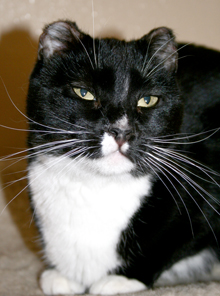
MAY 7, 2014
Harmful plants
From your friends at Foothills Animal Rescue
Spring has arrived and that means some of you will be getting your green thumb on and sprucing up your home for new life forms in your home or yard. Plants help cozy up a living space, but pet owners should be extra careful when choosing greenery. More than 700 plants contain toxic substances that may harm dogs or cats if ingested.
Signs of poisoning can be mild to severe and in some cases, pets can even die. Most houseplants have multiple names, so it's important to confirm that the plants you own or plan to purchase are not toxic to your pet.
Here is a list of plants you should avoid having in your home or yard to prevent your pet from accidentally ingesting:
The asparagus fern (also called emerald feather, emerald fern, sprengeri fern, plumosa fern or lace fern)
Corn plant (also known as cornstalk plant, dracaena, dragon tree or ribbon plant)
Dieffenbachia (commonly known as dumb cane, tropic snow or exotica)
Elephant ear (also known as caladium, taro, pai, ape, cape, via, via sori or malanga)
Lillies (also known as Mauna Loa)
Cyclamen (also known as sowbread)
Heartleaf philodendron (also known as horsehead philodendron, cordatum, fiddle leaf, panda plant, split-leaf philodendron, fruit salad plant, red emerald, red princess or saddle leaf)
Jade plant (also known as baby jade, dwarf rubber plant, jade tree, Chinese rubber plant,
Japanese rubber plant or friendship tree)
Aloe plant (also known as medicine plant or Barbados aloe)
Satin pothos (also known as silk pothos)
These plants all carry toxins that when ingested can cause severe allergic reactions in both cats and dogs so before you start your next gardening project, it doesn't hurt to consult with the gardening experts at your local nursery or home improvement store as well as your vet.
Happy Planting!
Foothills Animal Rescue, 23030 N Pima Road, Scottsdale, Arizona 85255. Call 480-488-9890 or visit www.foothillsanimal.org.
MAY 7, 2014
Pets TomoTherapy: High-tech therapy

TomoTherapy, a state-of-the-art radiation therapy system that delivers precise image-guided radiation therapy, allows veterinarians to pinpoint a tumor’s size, shape, and location seconds before radiation therapy begins. Though fairly expensive and meticulous, the benefit and accuracy of this treatment certainly exceeds the costs when your best friend’s life is at stake.
“TomoTherapy literally means slice therapy,” said Dr. Michael Deveau, assistant professor at the Texas A&M College of Veterinary Medicine & Biomedical Sciences. “While standard radiation therapy is currently delivered using a few static fields, helical TomoTherapy delivers treatment with a rotating beam.”
Performing a 360 degrees rotation around the patient, this allows for accurately directing radiation dose at the tumor itself while minimizing dose to the neighboring normal tissues. As the location or shape of the tumor evolves over time, the angles and intensity of the beams are also adapted to enhance the accuracy of the treatment.
“The TomoTherapy provides more precise radiation delivery to the tumor, allowing for fewer side effects to normal tissue,” said Deveau.
Radiation is not a benign form of therapy, and tolerance to it is dependent on tumor type, tumor volume, and the volume of normal tissue irradiated. “The objective of radiation therapy used to treat cancer is to eradicate the disease without producing unacceptable normal tissue complications,” said Deveau. “The tolerance to radiation of normal tissues depends on the volume and dose received. Unique to this radiation technique, the tumor itself is being treated while excluding or minimizing the dose to surrounding normal tissue structures. The conformal radiation beams provide more assurance that the dose will be confined to the tumor, in turn, producing far more favorable toxicity profiles when compared to similar treatments with inferior techniques and machines.
Ranging anywhere from $6,000 to $7,000 for a four-week session, this treatment only lasts for an average of 20 minutes, but the preparation is fastidious. Combining linear radiation therapy and CT scanning technology, TomoTherapy has the ability to treat tumors that were once considered untreatable and offers new armament for modernizing the management of cancer in veterinary patients.
“Suitable for almost all clinical presentations, it is one of the best, if not the best, machine for treating large complex tumors or clinical presentations requiring extended treatment fields,” said Deveau. When it comes to our beloved pets, this high-tech therapy brings high hopes for their ability to live long, healthy lives.
Pet Talk is a service of the College of Veterinary Medicine & Biomedical Sciences, Texas A&M University. Stories can be viewed at vetmed.tamu.edu/pettalk.



